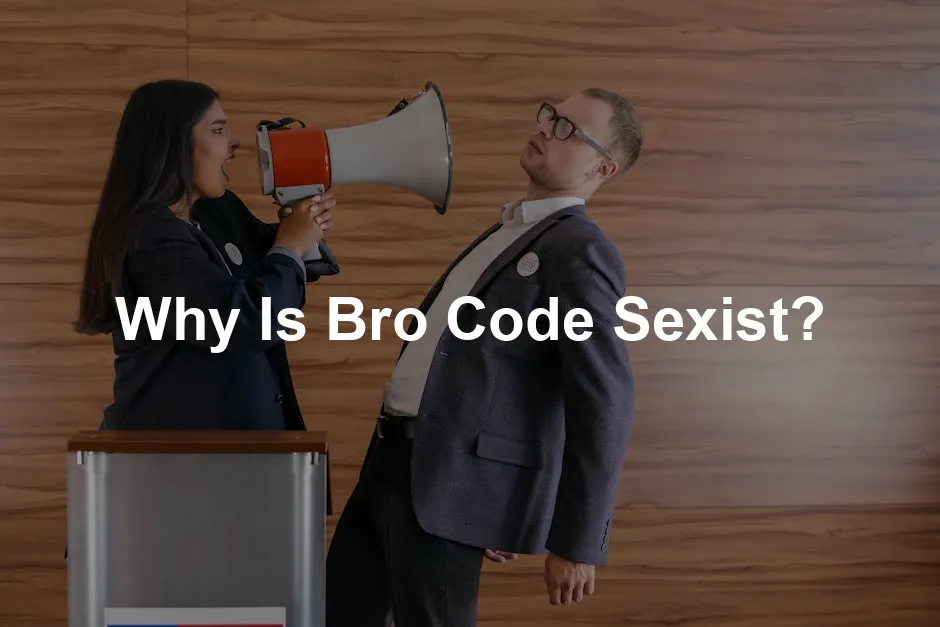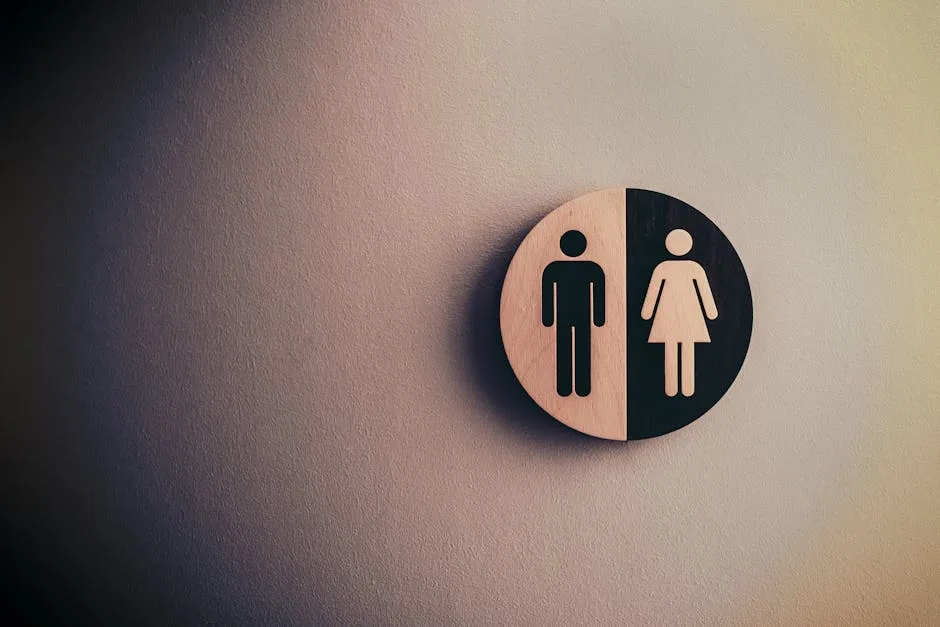
Why Is Bro Code Sexist?
Introduction
Bro code refers to unwritten rules among men. Often, it promotes loyalty and camaraderie. However, it also fosters sexism and misogyny. Many of its principles reinforce harmful attitudes towards women. In this section, we will examine how bro code perpetuates these negative beliefs.
Summary and Overview
Bro code is a societal construct with deep cultural roots. It originated in male-dominated spaces, often glorifying behaviors that undermine women’s rights. This code influences how men interact with women, often encouraging objectification and disrespect. Throughout this article, we will discuss the cultural influences that shape bro code, its implications for gender dynamics, and its impact on relationships. Understanding these aspects is crucial for addressing the sexism embedded in bro culture.
Understanding Bro Code
What is Bro Code?
Bro code encompasses a set of informal rules among men, often originating from popular culture. These rules include guidelines like “bros before hoes,” which prioritize male friendships over romantic interests. Such phrases create a sense of unity among men but also encourage a dismissive attitude toward women. Consequently, bro code reinforces a narrow definition of masculinity, where showing vulnerability or compassion is discouraged. This mindset not only harms women but also limits men’s emotional expressions, trapping them in rigid gender roles.
To dive deeper into the cultural context of bro code, consider reading Bro Code: The Book. It’s a humorous yet revealing look at the unwritten rules that guide the bro community! You might just find yourself chuckling while reflecting on some serious truths.

The Role of Media and Culture
Media plays a significant role in shaping perceptions of bro code. Popular culture often glorifies a hyper-masculine ideal, promoting notions of dominance and entitlement among men. Movies, music, and social media frequently depict men as conquerors, while women are portrayed as prizes or objects of desire. These representations influence how boys and young men understand gender roles and relationships.
For instance, films like The Hangover (DVD) and music videos often reinforce stereotypes that encourage men to prioritize their friendships and sexual conquests over respect for women. This behavior is not just entertainment; it normalizes misogyny in everyday interactions. Research indicates that young men who consume media with strong sexist themes are more likely to adopt similar attitudes in real life. A study found that frequent exposure to such media correlates with increased acceptance of sexual harassment and objectification.
Understanding how societal factors influence personal fears can be crucial. why do cultural influences impact fear of public speaking in 2024
Statistics show that nearly 70% of young men believe that media influences their views on masculinity. Additionally, over 60% of respondents in a recent survey reported feeling pressured to conform to these media-driven ideals. As a result, many men feel compelled to adhere to a rigid definition of masculinity, often at the expense of their emotional well-being and relationships with women. By challenging these portrayals in media, we can begin to reshape the narrative around masculinity, encouraging healthier interactions and more equitable relationships.

Objectification of Women
Bro code often teaches men to see women as mere objects. This mindset stems from the idea that women exist for male pleasure and validation. Media heavily influences this perspective, portraying women in highly sexualized roles. This objectification can have severe implications for female empowerment and self-esteem. Women may feel pressured to conform to unrealistic standards of beauty, leading to body image issues and anxiety.
Statistics reveal that nearly 70% of women in a study reported feeling objectified in daily life. Furthermore, research shows that frequent exposure to objectifying media correlates with an increase in sexist attitudes among men. When men internalize these messages, they may engage in harmful behaviors, such as catcalling or dismissing women’s opinions.
For instance, some men might believe it’s acceptable to comment on a woman’s appearance rather than her intelligence. This behavior reinforces harmful stereotypes and creates an environment where women feel unsafe or undervalued. It’s crucial to challenge these attitudes to foster a culture that respects women’s autonomy and recognizes their worth beyond physical appearance.

To better understand the dynamics of modern relationships, you might want to check out Modern Romance: An Investigation. This book dives into the complexities of dating today, which might just help you navigate the murky waters of love while keeping your bro code in check!
Impact on Romantic Relationships
Bro code significantly influences male-female romantic relationships. It can breed jealousy and competition among men, often leading to misunderstandings and conflict. For example, a guy might prioritize loyalty to his friends over his partner’s feelings, causing friction in the relationship.
Surveys indicate that couples who embrace sexist attitudes report lower relationship satisfaction. In one study, 65% of women stated they felt their partners often dismissed their opinions due to bro code attitudes. This leads to communication issues, where men may struggle to express vulnerability or share emotions.
Anecdotes illustrate this impact well. A friend once shared that his relationship suffered because he felt pressured to uphold bro code rules during a disagreement. Instead of discussing the issue openly, he chose to “be a bro” and avoid vulnerability, ultimately harming his connection with his girlfriend.

For those looking to improve their relationships, The Five Love Languages is a must-read. Understanding how to communicate love effectively can bridge gaps created by bro code attitudes.
The Bro Code of Silence
The “bro code of silence” refers to the unspoken agreement among men to remain silent about inappropriate behavior, especially regarding sexual harassment and assault. This silence can have dire consequences. When friends witness harmful actions but choose not to speak up, they perpetuate a culture of complicity. This complicity allows toxic behaviors to thrive unchecked.
Research indicates that bystander behavior plays a significant role in the prevalence of sexual harassment. A study found that 70% of witnesses to harassment did not intervene, often due to peer pressure or fear of repercussions. This inaction contributes to a toxic environment where victims feel unsupported.
For instance, when someone makes an inappropriate comment about a woman, laughter often follows. Instead of confronting the behavior, many men join in. This laughter not only normalizes the comment but also sends a message that it’s acceptable. It reinforces the idea that a woman’s worth is tied to her appearance, rather than her character or intelligence.
The implications of this silence are profound. Victims may feel isolated, believing they must endure harassment alone. Bystanders who remain silent may also internalize the notion that such behaviors are acceptable. Breaking this cycle requires a collective effort to challenge the silence and speak out against sexism.

Conversations About Change
Addressing the bro code starts with open conversations among men. These discussions are critical for unpacking the implications of bro code and understanding its impact on society. Movements like #MeToo have shown that when men stand together against misogyny, positive change is possible.
For example, many men have begun to reflect on their own behavior and the language they use. They recognize that joking about women or dismissing concerns only serves to reinforce outdated norms. By fostering open dialogues on change, men can challenge these norms and create a more respectful culture.
Encouraging conversations about sexism and masculinity is essential. It allows men to express vulnerability and develop healthier relationships. When men actively engage in these discussions, they help redefine what it means to be a man. Together, we can dismantle the bro code and promote a culture of equality and respect for all.

To aid in these discussions, consider picking up Toxic Masculinity: A Guide for Men. This insightful read will equip you with the frameworks to challenge harmful norms and promote healthier masculinity.
Steps Towards Equality
Addressing the bro code requires action. Here are some steps men can take to challenge these attitudes effectively.
First, educate yourself about gender equality. Understanding the impact of bro code on society is crucial. Recognize how these unwritten rules can undermine women and perpetuate harmful stereotypes.
Next, practice allyship. Speak up when you hear sexist jokes or witness disrespectful behavior. Use your voice to support women and challenge your peers. When men call out inappropriate behavior, it sets a powerful example.
Encourage open discussions about masculinity. Create spaces where men can talk about their feelings without judgment. This fosters emotional connection and helps break down toxic norms.
Reflect on your own behavior. Are there moments when you’ve unconsciously upheld bro code? Acknowledge these instances and commit to change. By doing so, you can positively influence others around you.

Finally, mentor younger men. Share your insights and experiences. Help them understand that true strength lies in respect and equality. Together, we can redefine what it means to be a man in today’s society.
Conclusion
Bro code reinforces harmful attitudes that impact relationships and society. By recognizing and challenging these behaviors, we can foster healthier interactions among all genders. It’s vital to take collective action towards redefining masculinity. Let’s promote respect, equality, and understanding for everyone. Together, we can make a difference.
Please let us know what you think about our content by leaving a comment down below!
Thank you for reading till here 🙂
All images from Pexels




